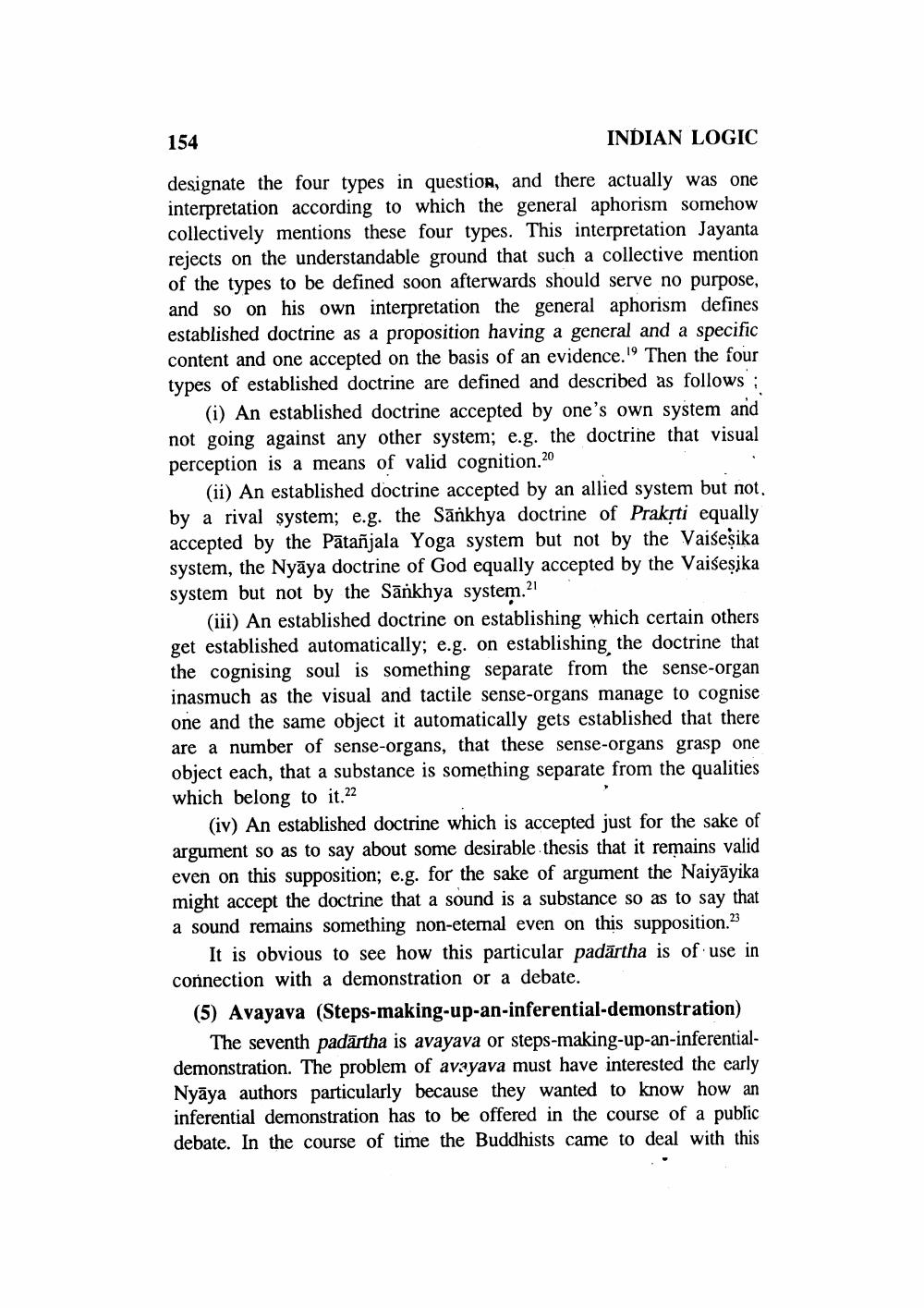________________
154
INDIAN LOGIC
designate the four types in question, and there actually was one interpretation according to which the general aphorism somehow collectively mentions these four types. This interpretation Jayanta rejects on the understandable ground that such a collective mention of the types to be defined soon afterwards should serve no purpose, and so on his own interpretation the general aphorism defines established doctrine as a proposition having a general and a specific content and one accepted on the basis of an evidence. Then the four types of established doctrine are defined and described as follows:
(i) An established doctrine accepted by one's own system and not going against any other system; e.g. the doctrine that visual perception is a means of valid cognition.20
(ii) An established doctrine accepted by an allied system but not. by a rival system; e.g. the Sārkhya doctrine of Prakrti equally accepted by the Pātañjala Yoga system but not by the Vaiseșika system, the Nyāya doctrine of God equally accepted by the Vaišesika system but not by the Sānkhya system.21
(iii) An established doctrine on establishing which certain others get established automatically; e.g. on establishing, the doctrine that the cognising soul is something separate from the sense-organ inasmuch as the visual and tactile sense-organs manage to cognise one and the same object it automatically gets established that there are a number of sense-organs, that these sense-organs grasp one object each, that a substance is something separate from the qualities which belong to it.22
(iv) An established doctrine which is accepted just for the sake of argument so as to say about some desirable thesis that it remains valid even on this supposition; e.g. for the sake of argument the Naiyāyika might accept the doctrine that a sound is a substance so as to say that a sound remains something non-etemal even on this supposition.23
It is obvious to see how this particular padārtha is of use in connection with a demonstration or a debate. (5) Avayava (Steps-making-up-an-inferential-demonstration)
The seventh padārtha is avayava or steps-making-up-an-inferentialdemonstration. The problem of avayava must have interested the early Nyāya authors particularly because they wanted to know how an inferential demonstration has to be offered in the course of a public debate. In the course of time the Buddhists came to deal with this




